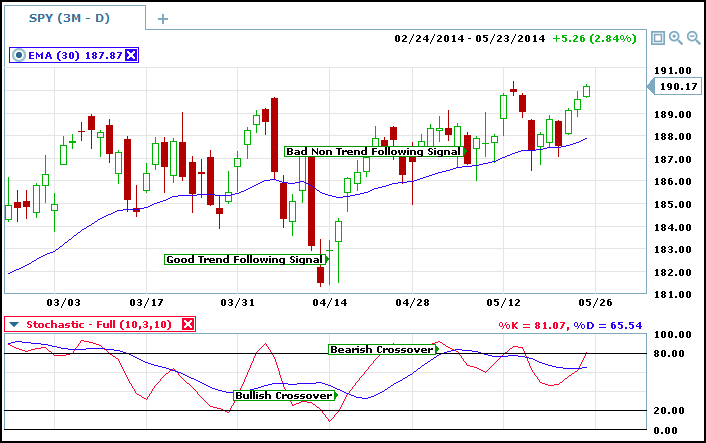Trader Beware! Is That A Tool Or A Strategy?
An all to easy pitfall for new and old traders alike is the failure to recognize the difference between a tool and strategy. A tool can be used for a strategy, strategies use tools but they are not the same thing. Failing to understand the difference between the two is a sure way to achieve loss through false signals and whipsaws, not to mention mountains of frustration. To begin, lets look at the text book definition of what a tool and a strategy is. A tool is a device or implement used to carry out a function. In terms of binary options, technical analysis and trading a tool is a device, usually mathematical, that provides information on the market and signals for entries. A strategy by definition is a plan or policy designed to achieve an overall goal. In terms of trading a strategy will usually aim at weeding out false signals from true ones with the overall goal of profiting over time.
I think that this is where traders can make the mistake of thinking a tool is a strategy. Take for example stochastic. Stochastic is an oscillator, a well known tool of technical analysis. Stochastic can easily be mistaken for a strategy because it is so well known and used. The problem is that stochastic, as a tool, can provide a variety of signals at any given time that can all be good and yet conflict with each other. The tool stochastic is used to measure the relative distance of each days closing prices with the highs and lows of given period. This data is then delivered to you, the trader, in the form of the oscillator displayed on your charts. The data, and the oscillator, can then be used to find signals with crossovers, using trend following technique, divergences, convergences, support and resistance.

One thing to keep in mind that this tool, and most others for that matter, are completely neutral. They do not take sides and do not take things like trend, support or resistance into play. The signals they give can seemingly change at the drop of a hat and that is why you must apply strategy to a tool in order to use it effectively. This is what I mean. Stochastic, RSI, MACD and all other oscillators will make bullish and bearish crossovers regardless of trend. Someone strictly trading on the crossovers is applying some strategy to the stochastic tool but not much. By simply allowing the tool to dictate trades the possibility of making a bad trade increases. One simple way to weed out a large number of trades that have a higher potential to be losers than winners is to use trend. Once you apply trend, or any other rule, to your tool you have begun to elevate it into the realm of strategy.

This also applies to other kinds of tools. Take for instance Fibonacci Retracements. Fibonacci Retracement is a method of predicting support and resistance that is based on the mathematical formulas of the Golden Ratio and delivered to western society by the mighty enlightenment age scholar Fibonacci. This tool is incredibly useful in predicting levels where the market might find support or resistance. In my experience the tool is eerily accurate, especially when you consider it uses no data except the high and low of a period and echoes the natural ratios found throughout nature. Simply assuming that Fibonacci Retracements are a strategy and that a trade will happen at the retracement line is a big mistake. More often than not any signal that does occur will happen near the line, not on it or at it. Adding some rules to your Fibs, such as a stochastic confirmation, is a good way to elevate this tool to a strategy.
How To Elevate A Tool To A Strategy
The first step is to set a goal. I assume your first goal will be to make money but that is too general. Narrowing it down we will say the goal is to make money using ToolX (stochastic in my case). This is also still a little broad of a goal and should be narrowed down a little more. Lets say that the goal is to make money using stochastic to find trend following signals. This is a goal that we can use to start setting some rules, which is the second step. By setting a goal that is specific you can make specific rules. Rules for this goal might include using a 100 bar moving average to set trend, only take trend following signals on the stochastic, don’t make bull trades when price is near resistance of bear trades when price is near support. By adding rules to your tools you are making plan that you can follow that will help you achieve your goals.